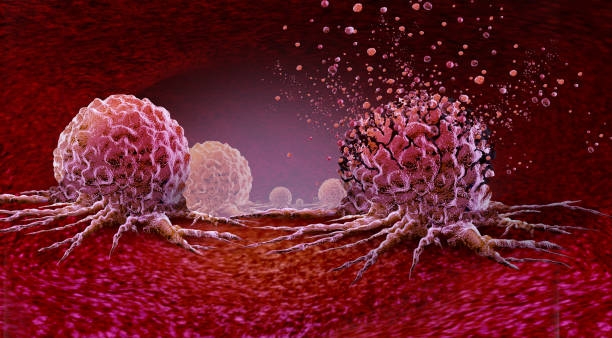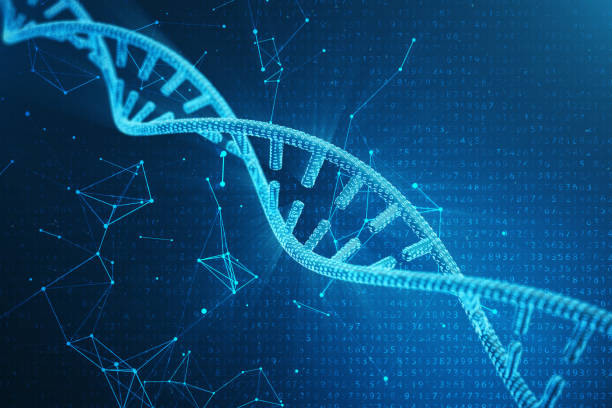Our bodies constantly balance life and death at the cellular level, which is vital to our health. Apoptosis, or programmed cell death, maintains this balance by removing damaged, old, or unnecessary cells, allowing the healthiest ones to thrive. However, when apoptosis fails, cells that should die continue to live and multiply, leading to the uncontrolled growth that characterizes cancer.
Think of apoptosis as the body’s natural pruning tool, like a gardener trimming dead or overgrown branches to keep a plant healthy. But when the pruning shears break, the plant becomes overgrown and unhealthy—just like cancer develops when apoptosis fails.
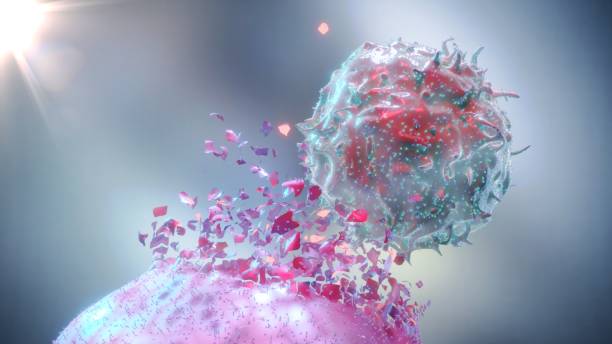
The Role of Apoptosis in Our Bodies
The term “apoptosis” comes from the Greek word “falling off,” like leaves from a tree. This normal, regulated process occurs as our bodies develop and age. During apoptosis, cells undergo a series of changes, eventually breaking down and being removed without harming surrounding tissues. This process is essential for several reasons:
- Development and Growth: Apoptosis shapes organs and tissues by removing unnecessary cells. For example, it eliminates the cells between developing fingers and toes, allowing them to separate properly.
- Immune Function: Apoptosis helps the immune system by eliminating harmful cells and winding down immune responses after an infection clears. Think of the immune system as a security team. When a foreign agent enters your body, this team fights it off. When the battle ends, apoptosis clocks out unneeded team members, preventing unnecessary inflammation
- Disease Prevention: Apoptosis removes damaged or mutated cells, helping to prevent diseases like cancer.
The Mechanism of Apoptosis: A Controlled Cell Death
Apoptosis works like a well-orchestrated dance, where every step is meticulously planned. A balance of signals either promotes or prevents cell death through two main pathways:
- Intrinsic Pathway: This pathway functions like an internal alarm system, activated by internal stress like DNA damage. Proteins inside the cell, like Bax and Bak, respond by releasing substances (such as cytochrome c) that trigger cell breakdown.
- Extrinsic Pathway: This pathway acts more like an external order to self-destruct. It begins when molecules like Fas or TNF bind to death receptors on the cell’s surface, initiating a cascade that leads to cell breakdown.
Both pathways ultimately activate caspases—enzymes that dismantle the cell while preventing inflammation and damage to surrounding tissues.

When Apoptosis Fails: The Link to Cancer
Cancer arises when apoptosis fails, allowing damaged or unneeded cells to survive and multiply. Here’s how cancer cells escape apoptosis:
- Inactivating Tumor Suppressors: Tumor suppressor genes like TP53 help trigger apoptosis in damaged cells. However, many cancers mutate TP53, allowing damaged cells to keep dividing. Over 50% of human cancers, including breast, lung, and colon cancers, involve TP53 mutations.
- Overexpressing Anti-Apoptotic Proteins: Some cancer cells produce high levels of proteins like Bcl-2, which block apoptosis and enable them to survive. For instance, certain leukemias persist due to overexpressed Bcl-2.
- Reducing Pro-Apoptotic Proteins: Cancer cells can reduce the production of pro-apoptotic proteins like Bax and Bak, tipping the balance toward survival.
- Disrupting Death Receptor Pathways: Some cancers alter their surface receptors, making them resistant to signals from the immune system that would trigger cell death. For example, some cancers lower their expression of the Fas receptor, which helps them avoid immune detection.
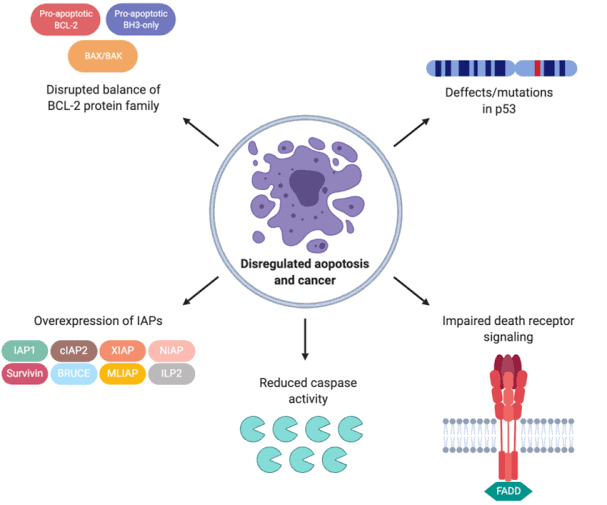
The Consequences of Failed Apoptosis
When apoptosis fails, it leads to several critical issues:
- Uncontrolled Cell Growth: Without apoptosis, cancer cells divide uncontrollably, leading to tumors. For example, skin cancer results when UV-damaged cells multiply instead of dying.
- Resistance to Treatment: Many cancer treatments, like chemotherapy, rely on inducing apoptosis. However, cancer cells that evade apoptosis resist these treatments, making them less effective. In some lung cancers, mutations in apoptotic pathways lead to chemotherapy-resistant tumors.
- Increased Genetic Instability: Cells that should have died accumulate mutations, becoming more aggressive and harder to treat. Ovarian cancer, for example, often shows genetic instability due to defective apoptotic pathways, making it a difficult cancer to treat.
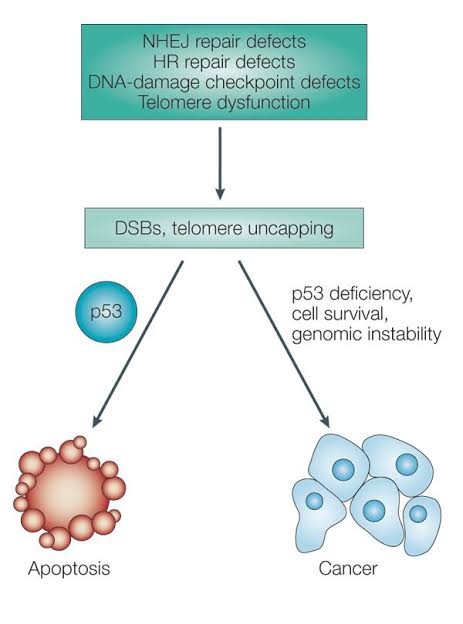
Therapeutic Implications: Targeting Apoptosis in Cancer Therapy
Given apoptosis’s role in preventing cancer, researchers are developing therapies to restore this process in cancer cells:
- BH3 Mimetics: These drugs mimic natural apoptosis signals. Venetoclax, for example, targets Bcl-2 and treats chronic lymphocytic leukemia.
- Restoring p53 Function: Therapies are in development to restore the function of p53 in cancers where it’s mutated. Some are in clinical trials for treating glioblastoma, a deadly brain cancer with few treatment options.
- Death Receptor Agonists: These treatments aim to trigger apoptosis by activating death receptors on cancer cells, offering potential in various cancers.
- Combination Therapies: Combining apoptosis-targeting drugs with traditional treatments like chemotherapy shows promise, particularly in resistant cancers. For example, combining BH3 mimetics with chemotherapy has shown encouraging results in treating aggressive lymphomas
Challenges and the Future of Apoptosis-Targeting Therapies
While targeting apoptosis in cancer therapy shows promise, challenges remain:
- Selective Targeting: Developing therapies that target cancer cells without harming normal cells is critical to minimizing side effects.
- Resistance Mechanisms: Cancer cells can adapt and become resistant to therapies that target apoptosis, so it’s essential to understand and overcome these resistance mechanisms.
- Biomarker Identification: Identifying biomarkers that predict a patient’s response to apoptosis-targeting therapies will help personalize treatment and improve outcomes.
Conclusion: The Balancing Act of Life and Death
Apoptosis is a key process that maintains the body’s balance by ensuring only healthy cells survive. When this balance breaks, cancer can develop. By understanding how cancer cells avoid apoptosis and finding ways to restore this process, we can develop more effective cancer treatments. The story of apoptosis and cancer is one of balance—and when we restore it, we hold the potential to turn the tide in the fight against cancer.
Further Readings
Elmore, S. (2007). Apoptosis: A Review of Programmed Cell Death.
Fulda, S., & Debatin, K. M. (2006). Extrinsic versus intrinsic apoptosis pathways in anticancer chemotherapy.
Faraji, N. et al.,(2022). ApInAPDB: a database of apoptosis-inducing anticancer peptides.
Weinberg, R.A. (2013). The Biology of Cancer. Garland Science.

